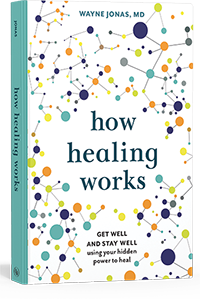For thousands of years, medical treatments have been selected and passed down using clinical experiences as the best approach to truth. But could accumulated medical wisdom, both from ancient practices like acupuncture and modern drugs, be wrong? If so, how could we explain healing?
Since 1991, I have had the good fortune to have jobs that allow me to explore these questions. First, as the director of the Medical Research Fellowship at Walter Reed Army Institute of Research, it was my job to teach the research fellows how to think critically about medical science and apply rigorous methods in their research. Each year we had five or six fellows who were taught in-depth research methods and learned critical evaluation skills. Each fellow did research on a cutting-edge medical topic and carried the study through from start to finish. I adopted evidence-based teaching methods that had emerged from Oxford and McMaster Universities to teach physicians how to counter the errors of clinical experience. The NIH later adopted some of those teaching methods in their courses on clinical research.
Ancient and Modern Healing Practices
Did these same principles apply to ancient healing methods and alternative healing approaches used by most people in the world? I had the opportunity to examine that when I took over as the director of the Office of Alternative Medicine at the NIH and a WHO Traditional Medicine Center of Excellence in 1996 and 1998, respectively. Later, when I was CEO of Samueli Institute, a nonprofit organization dedicated to exploring the science of healing, my team had the chance to do scientific deep dives into ancient and modern healing practices.
This series of jobs allowed me to work with physicians, healers, patients, and researchers around the world to examine three main questions:
- To what extent do the healthcare practices from diverse traditions actually work when rigorously studied using gold standard science?
- What degree of improvement is found from these healthcare practices when used in regular clinical practice?
- Are there any common characteristics that cut across all these traditions, ancient or modern, that can explain how their healing happens?
The Paradox of Healing
I call what has emerged from this exploration the “paradox of healing.” When rigorously studied, ancient traditional practices such as acupuncture and herbal remedies, as well as more recent complementary and alternative treatments such as homeopathy, dietary supplements, and manual therapies show disappointing results and only small effects.
Likewise, data on most of our modern conventional treatments show the same thing. Most drugs for pain, mental health, ulcers, hypertension, and diabetes, for example, show little benefit—often only 20% to 30%. Furthermore, the more carefully the studies are done, the smaller the effects. Even more startling, only about 30% of well-done studies—executed in the laboratory or in the clinic—can be independently replicated. Thus our confidence that even a 20% improvement can be repeatedly obtained is low. Even surgery (when not simply changing anatomy, like fixing a leg or removing a tumor) works minimally. And when these treatments do work it is often not for the reasons scientists think they do.
Yet the paradox is that all these approaches can work if applied properly. When we looked at the rate of improvement in patients who received very different types of treatments from around the world, we found that 70% to 80% of people will get better.
Reprinted with permission from How Healing Works: Get Well and Stay Well Using Your Hidden Power to Heal by Wayne Jonas, MD, copyright ©2018. Published by Lorena Jones, an imprint of Penguin Random House LLC.

Take Your Health Into Your Own Hands
Drawing on 40 years of research and patient care, Dr. Wayne Jonas explains how 80 percent of healing occurs organically and how to activate the healing process.

